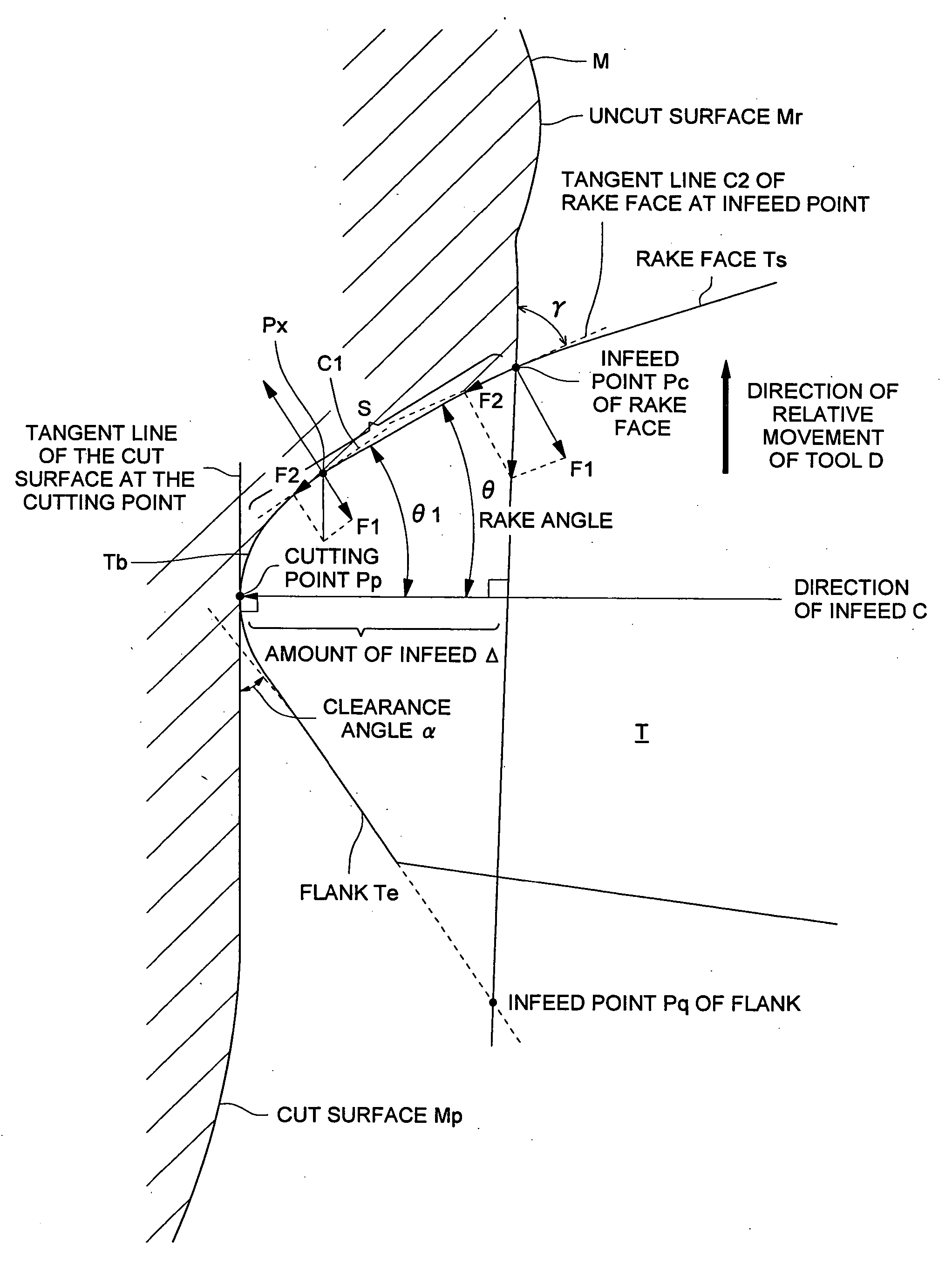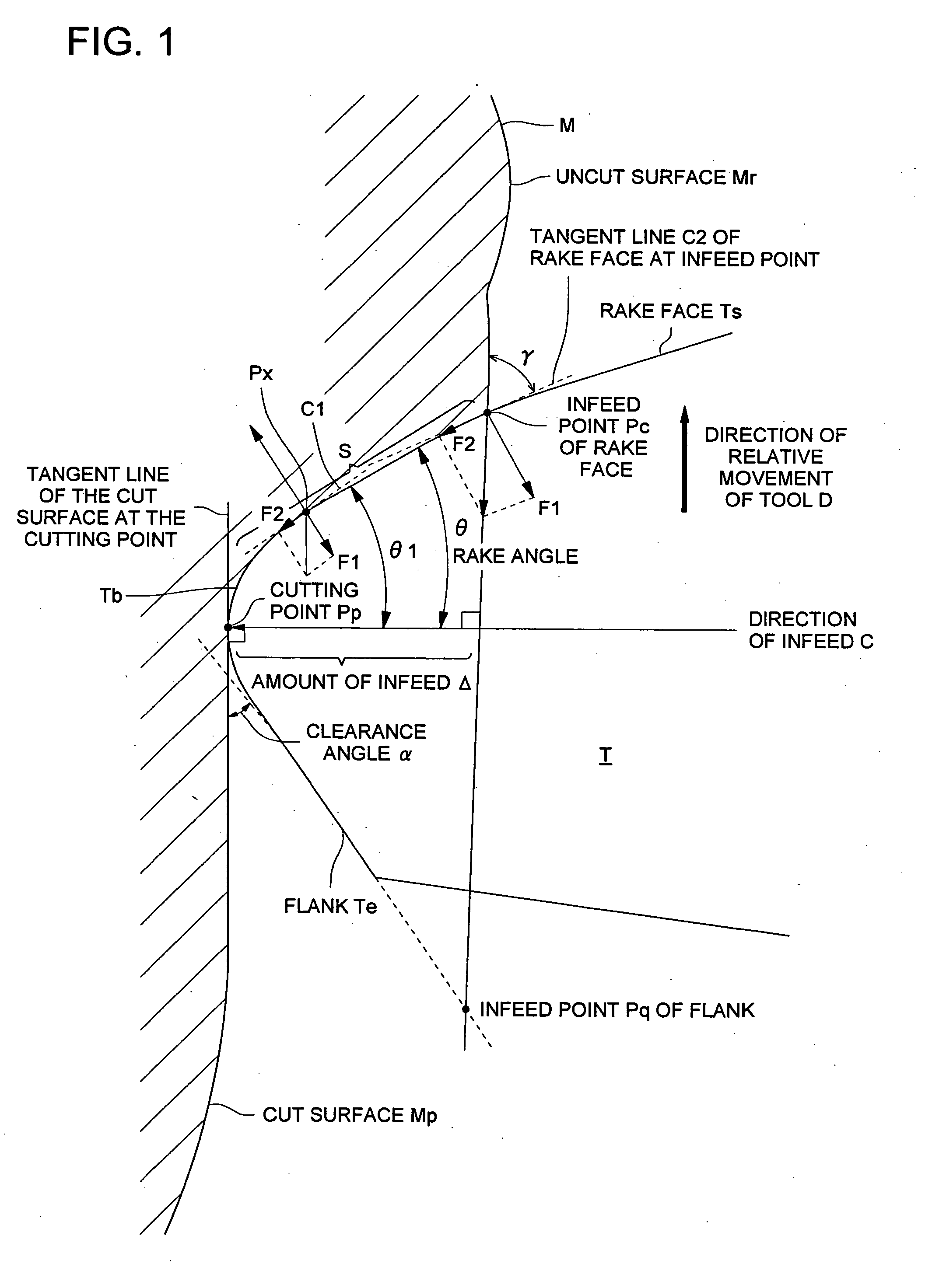Transfer optical surface machining method, optical device producing mold and optical device
a technology of optical surface and machining method, which is applied in the direction of turning machine accessories, drilling tools, manufacturing tools, etc., can solve the problems of increasing the number of pixels of the image capture device, further miniaturization of the device, and high initial performance of the optical device, so as to prolong the service life of the tool, reduce the number of tools, and reduce the effect of chipping
- Summary
- Abstract
- Description
- Claims
- Application Information
AI Technical Summary
Benefits of technology
Problems solved by technology
Method used
Image
Examples
example 1
[0163] The inventors of the invention practiced the method of processing of the invention by using the superfine processing machine shown in FIG. 11. Tungsten carbide (hereinafter referred to as WC) of RCC-FN (Vickers hardness Hv=2500) manufactured by Nippon Tungsten Co., Ltd. was used as a material of the workpiece. A form of an aspheric surface transfer optical surface representing an object to be processed is a concave transfer optical surface that is small and deep having approximate R concave of about 0.9 mm, central radius of curvature of 1.4 mm and an angle of maximum likelihood of 65°.
[0164] A surface to become a transfer optical surface on the workpiece was processed by electrical discharge machining in advance to become a concave spherical surface, and was further machined roughly to become a form of aspheric surface from an approximate aspheric surface, by a general purpose precision grinding machine having an axial resolution of about 100 mm. In this roughing grinding p...
example 2
[0176] The inventors of the invention conducted cutting operations by using the superfine processing machine shown in FIG. 8. Microalloy F (Vickers hardness Hv=1850) manufactured by Tungaloy Corporation was used as a material of a workpiece. With respect to a processed form to become a transfer optical surface, its cross-sectional form is in a form of an aspheric surface, and in the direction perpendicular to the processed form, it is in a cylindrical aspheric surface having no curvature (cross-sectional form in the Z-axis direction: approximate R concave of 3.2 mm, central radius of curvature of 5.4 mm, width of 0.9 mm, form in the X-axis direction: radius of curvature ∞ (infinite) and length of 15 mm).
[0177] In the same way as in Example 1, a transfer optical surface was processed by electrical discharge machining, and was machined roughly by a general purpose precision grinding machine. Finishing cutting operations of the invention was conducted by the superfine processing machi...
example 3
[0186] The inventors of the invention conducted cutting operations of the invention by using the superfine processing machine of a biaxial type with X axis and Z axis shown in FIG. 9. As a material of a workpiece, SiC subjected to powder sintering was made to be a base material, and SiC was applied to a portion that is to be a transfer optical surface by CVD (which is called CVD-SiC film) to create an elaborate transfer optical surface. The hardness of CVD-SiC used this time was Vickers hardness Hv2800.
[0187] As a method of processing a transfer optical surface, grinding operations are conducted by a general purpose precision grinding machine at a form error of about 100 μmPV to a form of aspheric surface wherein a film thickness of CVD-SiC is considered. After that, CVD-SiC is coated to a thickness of about 500 μm. After coating, the transfer optical surface form is created by the general purpose precision grinding machine, while conducting correcting processing for the final asph...
PUM
| Property | Measurement | Unit |
|---|---|---|
| angle | aaaaa | aaaaa |
| angle | aaaaa | aaaaa |
| angle | aaaaa | aaaaa |
Abstract
Description
Claims
Application Information
 Login to View More
Login to View More - R&D
- Intellectual Property
- Life Sciences
- Materials
- Tech Scout
- Unparalleled Data Quality
- Higher Quality Content
- 60% Fewer Hallucinations
Browse by: Latest US Patents, China's latest patents, Technical Efficacy Thesaurus, Application Domain, Technology Topic, Popular Technical Reports.
© 2025 PatSnap. All rights reserved.Legal|Privacy policy|Modern Slavery Act Transparency Statement|Sitemap|About US| Contact US: help@patsnap.com



